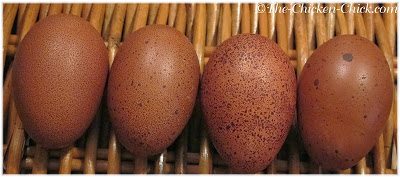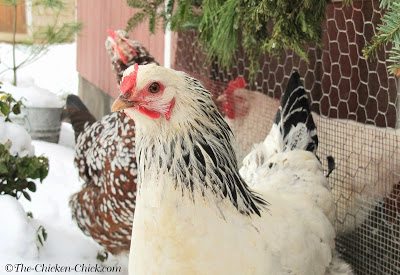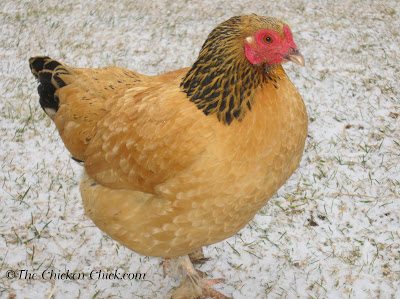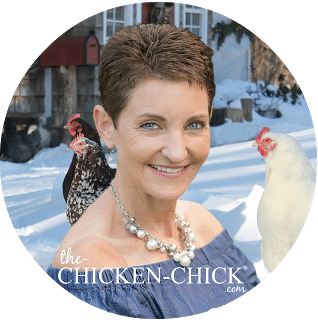When assembling a new flock of chickens, the enormous array of breeds available to choose from can be daunting, but it’s important to make an informed decision about breeds in order to avoid disappointment for the chicken keeper as well as unnecessary challenges for the chickens. Some breeds do not fare well in certain climates, some are not a good choice for young children, some produce fewer eggs than others, etc. Below are some of the basic factors to consider in selecting breeds. After the basics are established, the field of suitable breeds becomes much smaller and making choices becomes a much less daunting undertaking.
A Little Terminology
Most backyard chicken-keepers want laying hens, breeds that are reliable egg layers, not necessarily chickens that will be eaten, which are known as meat birds or table birds. When selecting breeds, the term “dual purpose” indicates that the breed of chicken is a good egg laying bird that may also be processed for meat. When good egg production is the objective, breeds that are known for being broody are not ideal because broody breeds often stop laying eggs in hopes of hatching chicks.
Freida is a White Silkie who would rather hatch eggs and raise chicks than do anything else and she is an amazing mother.
1. Climate
Some breeds cope better with cold weather than others due to heavy feathering; these are referred to as cold hardy breeds. Breeds that fare better in very warm climates due to their lighter/shorter/sleeker feathering are referred to as heat tolerant.
COLD HARDY BREEDS commonly include: Ameraucanas, Araucanas, Australorps, Brahamas, Buckeyes, Chantecler, Cochins, Delaware, Dominique, Faverolles, Jersey Giants, Marans, Orpingtons, Plymouth Rocks, Wyandottes, New Hampshire Reds, Sussex and Easter Eggers (a hybrid).
HEAT TOLERANT BREEDS commonly include: Andalusians, Appenzeller Spitzhaubens, Campines, Cornish, (NOT to be confused with Cornish Rocks, which are a meat hybrid) d’Uccles, Egyptian Fayoumis, Hamburgs, Leghorns, Modern Game, Minorcas, Naked Necks, Polish, Shamo, Sicilian Buttercups, Silkies, Spanish, Welsummers.
Breeds with prominent combs can be expected to have more challenges with frostbite in very cold climates than breeds with smaller, less prominent combs. This is not to suggest that a heavy breed cannot live in a warm climate and a light breed cannot live in a cold climate, but seasonal accommodations would need to be made for birds better suited for a different climate such as in the case of the Marans rooster pictured above.
2. Temperament
While each chicken is an individual with its own unique personality, generalizations can be made about breeds in much the same way as in dog breeds. If a household has small children where a docile, friendly dog is preferred, a feisty Chihuahua is likely not the best choice; likewise, a Hamburg would probably not be a good breed choice if one is hoping for a mellow lap chicken. Chickens are often characterized as being docile, flighty, calm, friendly and bearing confinement well or not.
3. Egg Production Rate
The rate of egg production can also be generalized by breed. Some breeds are known for being prolific egg layers, producing 4 or more eggs per week, (Plymouth Rocks, Wyandottes, Hamburgs) while others lay less frequently (eg: Silkies and Seabrights). If a family of five relies upon the eggs collected from the backyard flock, Silkies are likely not the right choice. My Silkie didn’t start laying eggs until she was 14 months old and averages five eggs per month. (she’s an extreme example, however)
4. Egg Color
Each chicken produces a different egg color based upon genetics. For some people, a colorful array of eggs is an important factor in breed selection, others, not so much. There are blue, green, dark chocolate brown, white and every hue in between to choose from. My neighbor insists on having a white egg-laying breed in her flock for the sole purpose of coloring eggs at Easter, while I prefer breeds that will produce fabulously colored eggs every day.
This is a Blue Ameraucana– she produces beautiful blue eggs. Shop carefully for this purebred chicken as many breeders and hatcheries mis-label hybrid chickens as purebreds.
This is an Easter Egger, which is a hybrid mix obtained from crossing a blue egg-laying breed with a brown egg-laying breed. While Esther produced a blue-green egg, Easter Eggers can lay a wide variety of colors from light brown to blue, olive green and everything in between.
5. Broodiness
Some breeds are predisposed to hatching eggs more frequently than others. If a high rate of egg production is important, a broody breed such as Silkie or Cochin may not be the best choice. If one wishes to have hens hatch and raise chicks, broodiness is very important and either Silkies or Cochins are excellent choices.
The Breed I Need
After the five primary considerations are taken into account, the selection process is fun! Here are some of the fun breeds I felt I needed when chicken math set in!
Kathy Shea Mormino
Affectionately known internationally as The Chicken Chick®, Kathy Shea Mormino shares a fun-loving, informative style to raising backyard chickens. …Read on


shop my SPONSORS
When assembling a new flock of chickens, the enormous array of breeds available to choose from can be daunting, but it’s important to make an informed decision about breeds in order to avoid disappointment for the chicken keeper as well as unnecessary challenges for the chickens. Some breeds do not fare well in certain climates, some are not a good choice for young children, some produce fewer eggs than others, etc. Below are some of the basic factors to consider in selecting breeds. After the basics are established, the field of suitable breeds becomes much smaller and making choices becomes a much less daunting undertaking.
A Little Terminology
Most backyard chicken-keepers want laying hens, breeds that are reliable egg layers, not necessarily chickens that will be eaten, which are known as meat birds or table birds. When selecting breeds, the term “dual purpose” indicates that the breed of chicken is a good egg laying bird that may also be processed for meat. When good egg production is the objective, breeds that are known for being broody are not ideal because broody breeds often stop laying eggs in hopes of hatching chicks.
Freida is a White Silkie who would rather hatch eggs and raise chicks than do anything else and she is an amazing mother.
1. Climate
Some breeds cope better with cold weather than others due to heavy feathering; these are referred to as cold hardy breeds. Breeds that fare better in very warm climates due to their lighter/shorter/sleeker feathering are referred to as heat tolerant.
COLD HARDY BREEDS commonly include: Ameraucanas, Araucanas, Australorps, Brahamas, Buckeyes, Chantecler, Cochins, Delaware, Dominique, Faverolles, Jersey Giants, Marans, Orpingtons, Plymouth Rocks, Wyandottes, New Hampshire Reds, Sussex and Easter Eggers (a hybrid).
HEAT TOLERANT BREEDS commonly include: Andalusians, Appenzeller Spitzhaubens, Campines, Cornish, (NOT to be confused with Cornish Rocks, which are a meat hybrid) d’Uccles, Egyptian Fayoumis, Hamburgs, Leghorns, Modern Game, Minorcas, Naked Necks, Polish, Shamo, Sicilian Buttercups, Silkies, Spanish, Welsummers.
Breeds with prominent combs can be expected to have more challenges with frostbite in very cold climates than breeds with smaller, less prominent combs. This is not to suggest that a heavy breed cannot live in a warm climate and a light breed cannot live in a cold climate, but seasonal accommodations would need to be made for birds better suited for a different climate such as in the case of the Marans rooster pictured above.
2. Temperament
While each chicken is an individual with its own unique personality, generalizations can be made about breeds in much the same way as in dog breeds. If a household has small children where a docile, friendly dog is preferred, a feisty Chihuahua is likely not the best choice; likewise, a Hamburg would probably not be a good breed choice if one is hoping for a mellow lap chicken. Chickens are often characterized as being docile, flighty, calm, friendly and bearing confinement well or not.
3. Egg Production Rate
The rate of egg production can also be generalized by breed. Some breeds are known for being prolific egg layers, producing 4 or more eggs per week, (Plymouth Rocks, Wyandottes, Hamburgs) while others lay less frequently (eg: Silkies and Seabrights). If a family of five relies upon the eggs collected from the backyard flock, Silkies are likely not the right choice. My Silkie didn’t start laying eggs until she was 14 months old and averages five eggs per month. (she’s an extreme example, however)
4. Egg Color
Each chicken produces a different egg color based upon genetics. For some people, a colorful array of eggs is an important factor in breed selection, others, not so much. There are blue, green, dark chocolate brown, white and every hue in between to choose from. My neighbor insists on having a white egg-laying breed in her flock for the sole purpose of coloring eggs at Easter, while I prefer breeds that will produce fabulously colored eggs every day.
This is a Blue Ameraucana– she produces beautiful blue eggs. Shop carefully for this purebred chicken as many breeders and hatcheries mis-label hybrid chickens as purebreds.
This is an Easter Egger, which is a hybrid mix obtained from crossing a blue egg-laying breed with a brown egg-laying breed. While Esther produced a blue-green egg, Easter Eggers can lay a wide variety of colors from light brown to blue, olive green and everything in between.
5. Broodiness
Some breeds are predisposed to hatching eggs more frequently than others. If a high rate of egg production is important, a broody breed such as Silkie or Cochin may not be the best choice. If one wishes to have hens hatch and raise chicks, broodiness is very important and either Silkies or Cochins are excellent choices.
The Breed I Need
After the five primary considerations are taken into account, the selection process is fun! Here are some of the fun breeds I felt I needed when chicken math set in!






























































I adopted 5 new 1 year old chickens about 2 weeks ago, they are currently in quarantine. I have been keeping a particularly close eye on them and for signs of anything unwanted. I found signs of tape worm in poop yesterday. I have wazine 17 which does not treat tapeworm. I have been suggested ivermetcin but don’t really like the harshness and potential harm to other animals. And the egg withdrawal is fairly long? Is there something else that you would recommend using?
So I got 6 chicks from a local Tractor Supply. They were in a brooder labeled Red Pullets. They are 2 weeks old now and I cannot tell what I have. I have 3 that are the same, 2 that are the same and 1 odd ball. How will I ever know what they are. Do they have to be fully feathered for me to research and know?
Sooooo if a breed is considered “flighty”, does that mean when I let them free range that I might be looking for chickens that may have flown into my neighbors yard?
There are breed books available, Jeri. Here is an affiliate link to one I like: http://amzn.to/1POHsvQ
When we first got chickens we used McMurray’s catalog to figure out what we wanted. Since then we’ve seen so many other breeds that they don’t carry. Is there a comprehensive list anywhere?